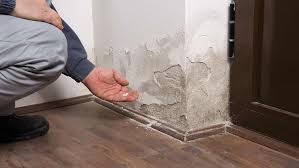A Complete Guide to the Water Damage Restoration Process

Water damage is a common issue that many homeowners face, whether due to natural disasters, plumbing failures, or accidental spills. Understanding the water damage restoration process is crucial for minimizing the damage and restoring your home to its pre-damage condition. This comprehensive guide will walk you through the essential steps involved in water damage restoration, ensuring you are well-prepared to tackle any water-related emergencies.
Understanding Water Damage
Water damage can occur for various reasons, including heavy rainfall, burst pipes, or leaks in the roof. It can lead to structural damage, mold growth, and loss of personal belongings. The key to effective restoration is acting quickly to mitigate the damage and prevent further complications.
Water damage is categorized into three types:
1.Clean Water Damage: Originates from a clean water source like a broken pipe or rainwater. It poses no immediate health risk.
2.Gray Water Damage: Comes from sources like washing machines or dishwashers. It contains some contaminants and may cause health issues if ingested.
3.Black Water Damage: Includes water from sewage backups or floodwaters. It contains harmful bacteria and pathogens, posing serious health risks.
Initial Assessment and Inspection
The first step in the water damage restoration process is a thorough assessment and inspection of the affected area. This involves identifying the source of the water damage, categorizing the type of water involved, and evaluating the extent of the damage. Professional inspectors use moisture meters and infrared cameras to detect hidden water pockets that may not be immediately visible.
Water Removal
Once the inspection is complete, the next step is water removal. This is a critical phase in preventing further damage and involves extracting standing water using powerful pumps and vacuums. The quicker the water is removed, the less damage will occur to your property.
Drying and Dehumidification
After the bulk of the water has been removed, the drying and dehumidification process begins. This step is essential for eliminating any remaining moisture that can lead to mold growth and structural damage. Industrial-grade dehumidifiers and air movers are used to dry out walls, flooring, and other affected areas thoroughly. Monitoring the moisture levels throughout this process ensures that everything is completely dry before moving on to the next step.
Cleaning and Sanitizing
Water damage often brings dirt, debris, and harmful microorganisms into your home. The cleaning and sanitizing phase involves removing any residue and disinfecting the affected areas. This step is crucial for ensuring the safety and health of the occupants. Carpets, upholstery, and other personal items are cleaned and restored if possible.
Restoration and Repair
The final step in the water damage restoration process is restoring and repairing your home to its pre-damage condition. This can involve minor repairs such as replacing drywall or painting, or major reconstruction projects like rebuilding entire rooms. During this phase, a restoration company will work closely with you to ensure that everything is restored according to your preferences and needs.
Preventing Future Water Damage
Prevention is key to avoiding future water damage. Regular maintenance of your plumbing system, roof, and gutters can help prevent leaks and water damage. It is also advisable to install a sump pump in your basement and ensure that your home’s drainage system is functioning properly.
The Importance of Professional Help
While some minor water damage issues can be handled by homeowners, it is often beneficial to seek professional help for more significant damage. A professional restoration company has the expertise, equipment, and experience to handle the restoration process efficiently and effectively. They can also help you with insurance claims, ensuring that you receive the compensation you deserve.
Conclusion
Water damage can be a devastating experience for any homeowner, but understanding the restoration process can help you mitigate the damage and restore your home effectively. From the initial assessment to the final restoration, each step is crucial in ensuring a successful outcome. Remember, acting quickly and seeking professional help can make all the difference in restoring your home and peace of mind.



